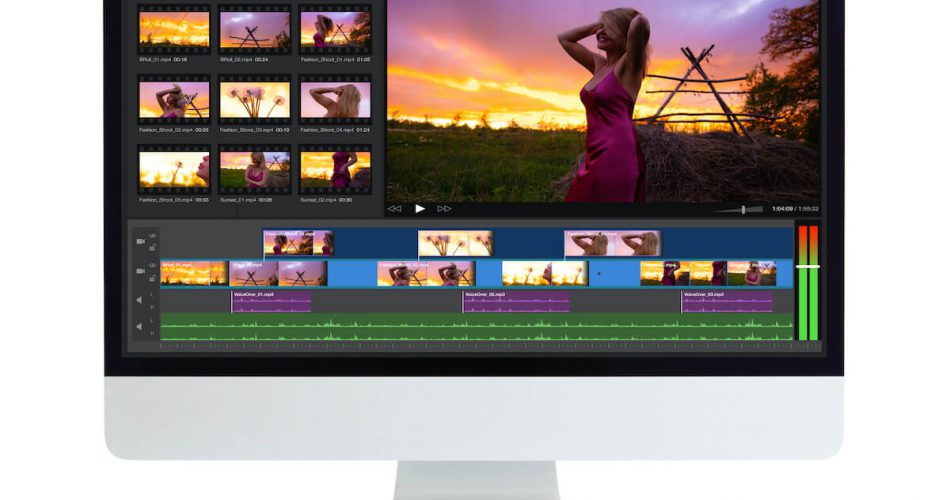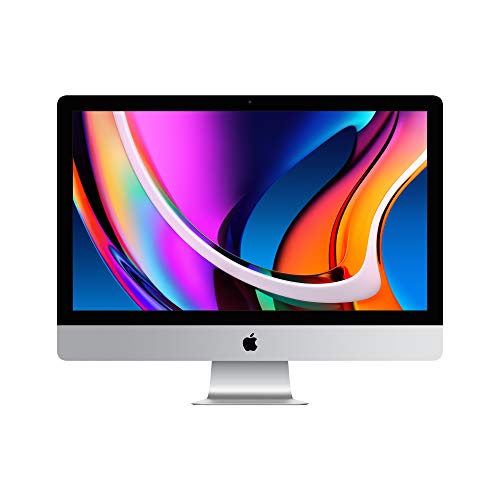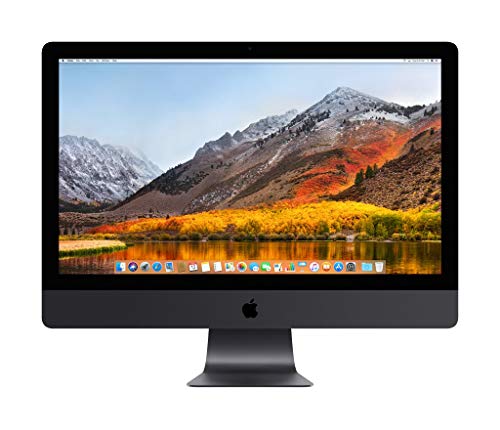With its endless features and gorgeous, a Mac or iMac is the best way to reach your creative potential. In addition, many professional video editors consider it a quality option due to its high resolution and compatible software.
Filmmakers who need a portable source to edit their work have always preferred MacBooks as an ideal. Meanwhile, iMacs are equally great as an affordable option for your home office. However, choosing a suitable Apple iMac for your creative work isn’t that easy since there are a lot of great choices to pick from.
Picking the suitable model is ultimately a preference-based choice. Whether you’re working professionally or simply learning the art of video editing, you’ll need a high-performing iMac or Mac that fulfills your creative needs efficiently.
Whether you want an iMac for your office or a portable MacBook for on-the-go editing, Apple has got you covered. Here is a list of the best iMacs for video editing in 2022, so take your picks based on your preference and budget.
Table of Contents
Top 9 iMacs for Video Editing
Here are the nine best iMacs and Macs for video editing.
24-inch Apple iMac 2021
Available in 7 different colors, the 24-inch iMac from 2021 is known for its modish aesthetics. Admittedly, it’s pretty expensive, much like all other Apple devices. However, you’ll understand the high price when you find out about its impeccable specs.
Firstly, its 4.5K Retina display won’t disappoint you with its P3 wide color gamut, True Tone technology, and 500 nits brightness. Simply put, its industry-leading, the brilliant display is made to fulfill all your video editing software.
In addition, the 8-core Intel Core i5 processor and 7-core graphics card pack powerful computational muscle. While the 256 GB SSD storage can be upgraded to 1 TB, the 8 GB RAM can be configured to 16 GB. The efficient hardware of this PC makes it the best iMac for video editing.
The 24-inch iMac supports Thunderbolt 3 digital video output and Native DisplayPort output over USB-C. Even more, the six-speaker system has force-canceling woofers, which means you can count on a rich audio output during video editing.
Pros
- Powerful 6-core processor
- Two Thunderbolt 3 high-speed ports and two USB 3 ports
- Full-sized keyboard and mouse included
- Crystal-clear 5K Retina display
- Extendable memory
- Color-matched accessories
- Great 1080p webcam
- Six-speaker sound system delivers rich audio
Cons
- Non-adjustable stand
- It lacks an SD card reader
Apple iMac 27-inch 2020
If a crystal-clear display is your priority while video and photo editing, the iMac 27-inch model is the best PC for you. Its 5K Retina display will surely never disappoint you, but that’s not all. The computational muscle of this 27-inch iMac is entirely unmatched.
Undoubtedly, the 27-inch iMac proves the saying, “the bigger, the better.” Not only does the Retina 5k display offer a p3 wide color gamut, but it also has 500 nits brightness and True Tone technology. Plus, it can be configured with nano-texture glass!
Its 3.8GHz 10th gen Intel Core i7 processor can be boosted up to a 5GHz Core i9 processor. Meanwhile, the AMD Radeon Pro 5300 graphics card provides premium video quality, making the iMac 27-inch the best computer for video editing.
Lastly, the iMac provides 18 GB DDR4 RAM and 512 GB SSD storage.
Pros
- Option for matte “nano-texture” or glossy Retina 5K display
- 1080p camera
- Fast computing and graphics performance
- Stylish, minimalist design
- Large 27-inch display
- Four Thunderbolt 3 ports
- Long battery life
- Clear display with increased sharpness
Cons
- No touch screen
- Somewhat uncomfortable keyboard
21.5-inch Apple iMac
If you want a smaller iMac with the same power-packed hardware, you should go for the 21.5-inch iMac. Its 21.5-inch, 4K Retina display creates a lightweight and compact body, making it the best iMac for video editing in a small workspace.
Other than that, the 3.0 GHz 6-core 8th generation Intel Core i5 processor works with the AMD Radeon Pro 560X GPU to promise speedy video editing. You can also expect a 1 TB fusion drive of ultrafast storage when investing in this iMac.
In addition, you’ll never have to worry about lags or latency while working since the computer’s RAM can be upgraded to 32 GB. The best part is that the iMac’s port selection is premium. It includes four USB 3 ports, two Thunderbolt 3 ports, and Gigabit Ethernet.
Pros
- Gorgeous 21.5-inch display
- Time-tested, stylish exterior
- Great attention to detail
- macOS Mojave packs lots of proper basic functionality
- Upgradable RAM
- Potential video boost with macOS High Sierra
- Four USB 3 ports
Cons
- Relatively slow Fusion Drive
- No dedicated HDMI or DisplayPort video output
Apple iMac Pro
The iMac Pro is the leading product of Apple’s Mac collection due to its speedy processor and zero latency. The iMac Pro is powered by the 8-core Intel Xeon W processor and AMD Radeon Pro Vega 56 graphics.
As for its display, the iMac Pro boasts a 27-inch screen with 5120 x 2880 resolution, which allows for 8K video editing. In addition, the Retina panel displays even the minute details of your work in crystal-clear definition due to the millions of colors powering.
Lastly, the 32 GB DDR4 RAM and 1 TB SSD storage space ensure your iMac Pro never lags or runs out of space.
Pros
- Intel Xeon CPU offers serious computing power
- Gorgeous design in Space Gray extends to the wireless peripherals
- Reliable AMD Radeon Vega for high-quality video rendering
- 5K resolution display
- Double cooled case with four USB-C ports
- Ability to expand hardware
- Branded keyboard and mouse included
Cons
- Performance gains depend upon workflow
- Uncomfortable keyboard
13-inch Apple Macbook Pro
The 13-inch Macbook Pro is known for its long-lasting battery and sufficient RAM, making it the best Mac for video editing. Firstly, its Retina LED-backlit display is supported by IPS technology, 2560 x 1600 resolution, and millions of colors.
The Macbook Pro runs on an 8-core Core i5 CPU, with four cores dedicated to performance and four dedicated to efficiency. Meanwhile, the 8-core Intel Iris Plus Graphics 655 powers the graphics for premium video output. The best part is that the Macbook Pro can last up to 20 hours.
Lastly, the Macbook Pro provides 8 GB RAM and 512 GB SSD storage, which is why most video editors prefer it.
Pros
- Long battery life
- Speedy performance from the Apple M1 chip
- Improved webcam
- Excellent build quality
- Comfortable keyboard and trackpad
- Brilliant Retina 4k display with True Tone feature
- Ability to connect a separate GPU
- Ultra-compact design with four USB-C ports
Cons
- Only two USB-C ports
- Stingy standard 256GB SSD and 8GB RAM
15-inch Apple Macbook Pro
The 15-inch model of the Macbook Pro differs from the former and is the best Mac for video editing due to its processor and RAM capacity. The 15-inch Macbook Pro runs on the 2.8 GHz Intel Core i7 processor, which promises speedy performance, no matter what editing software you use.
Meanwhile, the graphics are powered by Intel HD Graphics 630. Much like any other Mac for video editing, the Retina display of the Macbook Pro is exceptional. In addition, these laptops boast a 2880 x 1800 resolution along with 10-hour battery life.
While its 256 GB SSD provides ample storage space, its 16 LPDDR3 RAM eliminates lags while exporting videos.
Pros
- Excellent performance on CPU-limited workflows
- Oversized, accurate trackpad
- Four Thunderbolt 3 ports
- Retina 4k display
- Long battery life
- The New 8-core Intel processor promises speedy performance
Cons
- No dedicated video output or USB Type-A ports
- Very short key travel
Apple Mac Pro
The Apple Mac Pro is simply a computer tower that doesn’t have any peripherals, including the monitor, mouse, or keyboard. As a result, the Mac Pro is ideal for those who consider processing power a top priority above anything else.
The Mac Pro runs on a 3.5GHz 8-Core Intel Xeon W processor, configured to a 28-core 2.5GHz CPU. Meanwhile, you can upgrade the AMD Radeon Pro 580X graphics card to a Radeon Pro W6800X Duo graphics card with 64GB of GDDR6 memory.
Other than that, the Mac Pro offers 32 GB RAM and 256 GB SSD storage. However, you can boost them up to 1.5 TB of RAM and 8 TB SSD to get the most out of your Mac Pro.
Lastly, the Apple Mac Pro has the perfect port collection, making it the best Mac for video editing. That includes two Thunderbolt 3, USB-C, DisplayPort video routing, and more. The Mac Pro also has built-in speakers that promise to boom, rich audio.
Pros
- Ability to connect up to 6 monitors simultaneously
- Silent cooling system
- Expandable hardware
- Connecting up to 36 peripheral devices
- Modish design
- Intel Xeon E5 processor provides powerful performance
- Supports multiple simultaneous 4K video streams
- Many external expansion options
- Six Thunderbolt 2 ports
Cons
- No internal access to processor or graphics cards
- Very expensive
Apple Mac Mini
Lastly, our list of the best iMac for video editing wouldn’t be complete without the Mac Mini. Unfortunately, the Mac Mini doesn’t have a display or other peripherals like the Mac Pro. However, that allows it to pack more computational muscle.
The Mac Mini is powered by a 6-core i5 processor and Intel UHD Graphics 630. The 8 GB RAM is configurable up to 16 GB, 32 Gb, and 64 GB. On the other hand, you can configure the 512GB PCIe SSD to 1 TB or 2 TB SSD.
Other than that, the Mac Mini offers video support for up to 3 displays, Thunderbolt 3 digital video output, and HDMI 2.0 display video output. You’ll also find USB-A and Ethernet ports on the Mac Mini., along with USB 3.1 Gen 2.
Pros
- More affordable than other Mac products
- Improved performance from the 2018 model
- Promising bench results with native “Universal” apps
- Quiet and cool operation under load
- Attractive, compact, and elegant case design
- Optical digital audio input/output
- Allows you to connect any peripheral device of your choice
Cons
- Memory is no longer upgradable post-purchase
- Boosting RAM and SSD capacity at purchase time is pricey
Buyer’s Guide to the Best Mac for Video Editing
Whether you’re opting for an iMac, iMac Pro, Mac Pro, or Macbook, here are a few elements to consider while buying a creative outlet for video editing.
CPU
The processor of your Mac will play the main role in terms of speedy and frictionless video editing. If you want your video editing computer to support the best and heaviest of video editing software, you’ll need to make the CPU a top priority.
We’d recommend settling for nothing less than a 6 to the 8-core processor, as it’ll serve you best. Admittedly, this is a pricier option than a primary dual-core processor, but it’ll be worth it when you see the enhanced performance.
The minimum requirement for seamless video editing is a quad-core Intel Core i5 processor. However, it would be ideal to find a way to exceed this requirement.
Display
It’s no secret that Apple doesn’t compromise on display. So, you can count on a gorgeous, high-res screen when you invest in a Mac or iMac. However, it’s still important to know the minimum requirements for video editing to ensure your Apple device is sufficient.
Apple’s Retina display is known for its crisp definition, wide viewing angles, natural colors, and accurate rendition. We’d recommend nothing less than a 13-inch screen and 4k resolution so you can see the minute details of your creative work.
If a large screen is your priority while working on your videos, the iMac 27-inch is the best option for you.
GPU
Your computer’s graphics card is one of the most influential components for video editing. The quality of the GPU affects the rendering of videos and images, which is why you must opt for the best in the market.
Any professional video editor most commonly prefers AMD graphics cards. We’d recommend settling for nothing less than an AMD Radeon Pro GPU since it’ll provide you with a premium level of graphic performance.
RAM
You may not think so, but your computer’s RAM matters greatly during video editing. It affects the speediness of the video editing process, mainly while you’re exporting the final cut. That’s why you must ensure your Mac has a high RAM capacity.
The minimum requirement for 4k video editing and 360-degree video editing is at least 16 GB of RAM, which will ensure there are no lags while you’re multitasking. However, it would be ideal if your Mac had 32 GB of RAM.
Storage
Once you’re done exporting the finished product, you’ll find that your videos will take up a lot of space on your computer. To ensure your Mac doesn’t start lagging or run out of space, you must opt for one that offers vast storage space.
First, you’ll have to pick between SSD storage (solid-state drive) and HDD storage (hard disk drive). We’d recommend opting for SSD since it provides much faster performance than the latter option.
256 GB SSD storage is the minimum requirement for a video editing computer, but 512 GB or 1 TB SSD would be ideal.
Video Editing Software
Last but not least, you must ensure that your Mac or iMac is compatible with the video editing software of your choice. However, that’s not a factor you’ll have to worry about since most video editing software is created with Apple devices in mind.
PowerDirector 365, Adobe Premiere Pro, Final Cut Pro X, and DaVinci Resolve are a few of the most popular video editing software compatible with Mac. Furthermore, you must ensure your computer has the right specs to support this software.
FAQs
How do you choose a Mac laptop for video editing?
All Macs and iMacs are ideal for video editing since Apple manufactures its products with creative professionals in mind. However, you must still consider the specs to ensure they’re sufficient for your specific type of video editing.
You can choose your Macbook based on the model, screen size, display resolution, processor, graphics card, storage space, RAM capacity, and compatibility with your preferred editing software. We would recommend configuring the Mac with the highest specs.
How do you choose a processor for video editing?
As a video editor, you’ll need a laptop with a high-performing laptop, especially for 3D video editing, 4K video editing, and 360-degree video editing. The higher the resolution of your work, the speedier your processor will have to be.
Your computer’s CPU must also support the graphics processor you’re working with. It’s best to opt for a processor with as many cores as possible, such as 8-core, 6-core, or at least quad-core.
We’d recommend nothing less than an Intel Core i5 processor, but the ideal choice would be an 8th-generation Intel Core i7 processor.
Is GPU or CPU more important for video editing?
Neither the CPU nor GPU of your computer for video editing is more important than the other. Instead, they both play their respective roles in creating a high-definition interface for video editing. While the processor maintains speed while working, the graphics processor ensures premium video quality.
Which is better for video editing, iMac or Macbook Pro?
The iMac and Macbook Pro provide high-performing processors, reliable GPUs, high-capacity RAM, and large storage spaces. That’s why they’re both suitable for video editing, and the choice is ultimately based on preference and type of work.
While Macbooks are better for on-the-go editing, iMacs are ideal for home offices and those that prefer larger screens.
Is it better to edit videos on a Mac or PC?
Since Apple devices are made with creative professionals in mind, they’re a much better outlet to edit videos expertly. In addition, you’ll find reliable CPUs and GPUs along with added features in a Mac that a non-Apple PC can’t offer.
Conclusion
Most creative professionals prefer Apple devices as their creative outlet despite their high cost. The high-res display, speedy processor, and outstanding features are what make Apple iMac the most sought-after option from any other PC or laptop on the market.
Picking one from all these convenient and premium-quality Macs isn’t that simple. That’s why you can follow our buying guide to narrow down your choice. Now that you’ve explored all the specs and features, you can pick the right iMac to enhance your video editing.
About Our Reviews:- Macdentro.com is a team of consumer advocates committed to bringing you accurate, non-biased reviews on all tech products. We also analyze customer satisfaction insights from verified buyers. If you click on any link on Macdentro.com & decide to buy it, we may earn a small commission.







